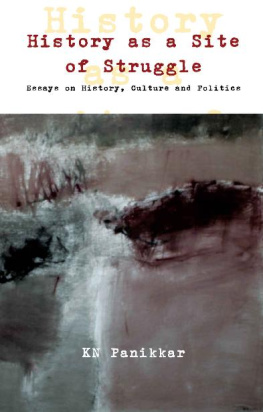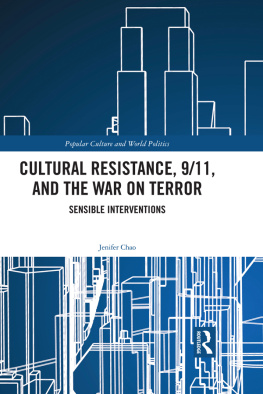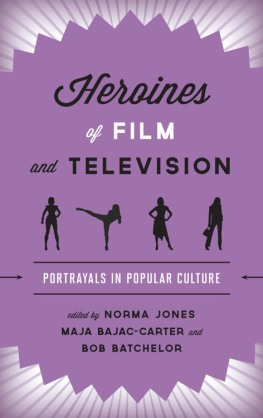Well, if you are reading this, then you already know the clich: we couldnt have completed this book without an axis of sublime support for which we are grateful. We also couldnt have wished for a better international collaboration. It has been immensely enjoyable since its inception at the 2006 American Studies Association Conference, Oakland, CA: thank you to Jonathan Vincent for helping to organize that panel with Anna. Somehow we have figured out how to communicate, even though Jeff lives on the West Coast of the US, Anna on the East Coast, and Karen in the south of England. We have met and discussed this project in London, Southampton, and Dublin and near the beaches of North Carolina: we look forward to planning the next one.
We would like to thank David Barker at Continuum for supporting this project and to Katie Gallof and Kim Pillay for their good counsel and enduring patience.
Jeff Birkenstein: I would like special thanks to go to the following: my proofreaders and so much more: Diana Michaels (hi Mom!) and Ashley Elaine Reis; and, at the eleventh hour, my cousin Su(si)e Felshin. I am grateful to Amber Graves and Karen Jaskar for help with the bibliography. John Cawelti, Professor Emeritus and teacher extraordinaire, taught me in his Pop Genres course at the University of Kentucky that any genre was ripe for critical inquiry. As friend and mentor, I deeply appreciate David Price, and all our bull sessions (many of which were serious) at the Fish Tale Brewpub in Olympia, WA. Thank you to my beautiful friends and colleagues in the English department at Saint Martins University who supported the class David and I team taught: Mining 9/11: Narratives from the Aftermath. And, of course, the students in that class; together, we tried to make sense of this jumbled American story. Thank you to my father, Robert Birkenstein, who has never stopped sending me newspaper clippings in the mail, even though I moved away from Southern California 13 years ago. Thank you to all the rest of my family for all your love and support, wherever and whenever you may be
Anna Froula: I would like to thank John Cawelti, Armando Prats, Gregory Waller, and Susan Bordo who opened the world of popular culture to me as a field of endless critical possibilities and nurtured my initial intellectual queries into this area when I was a graduate student at the University of Kentucky; I remain grateful for their mentorship. Dana D. Nelson also offered fantastic feedback on the San Domingo revolution portion of my chapter.
At East Carolina University, Will Banks, Michelle Eble, Rick Taylor, Jim Holte, Kirk St. Amant, Joyce Middleton, Randall and Christie Martoccia, Gera Miles, and Marc Petersen are among the wonderful faculty who have patiently engaged my interests in war and zombie culture. The students in my spring 2008 Post-9/11 Film and American Culture class offered excellent inspiration and conversation. My summer 2009 students supplied numerous insights about horror and London in 28 Days Later I particularly appreciate the colleagues and friends at ECU who helped me revise and edit portions of this book: my beloved Femidemics (Marame Gueye, Su-Ching Huang, Amanda Ann Klein, Anne Mallory, and Marianne Montgomery), my copyeditor extraordinaire, Brent Henze, and my technical advisor, Donna Kain.
My Froula, Leftwich, and Morris families are constant with their love and support as well as in their enthusiasm about my projects. Mom and Dad, thank you for the zombie comics, and please keep them coming. And finally and most of all, thanks go to my husband, Sean, for bringing delicious meals to my office during the last push, taking an incisive pencil to my prose, and everything else.
Karen Randell: I would like to acknowledge the Faculty of Media, Arts and Society at Southampton Solent University for its research support: in particular Professor Rod Pilling (Dean) and Paul Marchbank MA (Head of School of Media). And to Darren Green and Rosemary Waldock for getting to me to the right conferences, right hotels, and on the right planes: you two are my unsung heroes.
Many thanks to my friends and colleagues in the Film and Television Program at Southampton Solent University for their continued encouragement, constructive feedback, and good humor: Mark Aldridge, Jackie Furby, Claire Hines, Darren Kerr, Donna Peberdy, Tony Steyger, and Mark de Valk; you all make the work look easy. Thanks also to all my students of Visualizing War (at SSU and at The University of Otago, Dunedin, NZ) whose insightful thoughts and enthusiasm have kept me inspired and motivated. Finally, special thanks to my familyalways love, always loud, and always on my side.
If it sounded like the plot to a Hollywood movie, its because that is precisely what it was.
In October 2001, a little more than a month after the World Trade Center was leveled and the Pentagon attacked in a coordinated assault that itself seemed choreographed by a Hollywood director, the Bush Administration mulled a Justice Department proposal to send the military to a suburb of Buffalo called Lackawanna, to arrest six members of what was thought to be a sleeper cell in league with al-Qaeda. The image of US troops cordoning off neighborhoods and armored tanks rolling through the streets of a quiet American town comes directly from the 1998 Hollywood blockbuster, The Siege, starring Denzel Washington and Bruce Willis. The movie, written by New Yorker scribe Lawrence Wright, whose non-fiction account of the events leading up to 9/11, The Looming Tower, became a bestseller, conjures up a New York City made so paranoid by a series of terrorist attacks that the government must declare martial law and send in the military to police the petrified residents.
Of course, the homegrown terrorist plot in Buffalo turned out to be a bit more banal than what one finds in the average Hollywood thriller. The Arab-American terrorists who became known as the Lackawanna Six were ultimately revealed to be a crude and clumsy parody of the villainous geniuses imagined by the movies. The men were hardly zealots seeking martyrdom; indeed, you could hardly call them men. According to journalist Dina Temple-Raston, who wrote a book about the Lackawanna Six, these were kids in their twenties looking for a thrill. Their flirtation with jihadism was, in Temple-Rastons words, akin to a teenagers decision to steal a car: he knew he shouldnt, but a youthful rush made him do it anyway.
In the spring of 2001, the boys from Lackawanna traveled to an al-Qaeda training camp in Afghanistan where they watched jihadist propaganda videosal-Qaedas version of the Hollywood blockbusterwent through a few obstacle courses, and learned how to talk tough about Israel and the United States. But by all accounts they were frightened and appalled by the ideology of violence propagated by the camps leaders and desperate to return to the US as soon as possible. Some of them even feigned injuries so as to be allowed to leave early. Once back in the US, they immediately put the camp behind them and moved on with their lives.





![David Schmid (editor) - Violence in American Popular Culture [2 volumes]](/uploads/posts/book/262757/thumbs/david-schmid-editor-violence-in-american.jpg)

